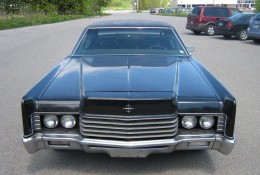Uber, Capitalism, Price Gouging

This weekend, Uber, the venture-funded startup that connects riders with private drivers, used surge pricing to gouge riders while it snowed outside. Co-founder Travis Kalanick said the higher prices were to entice more drivers on the road to pick up customers. Sam Biddle noted that “people were disgusted by the exorbitant 8x pricing, and no one beyond those for whom money is no object could afford to use the service at all,” while Nick Bilton pointed out that wild changes in prices make it difficult to trust a company. In Wired, Uber’s founder says that his two options were either to hijack prices, or risk upsetting customers with more demand than supply:
The gamble Uber is taking with surge pricing seems to boil down to a choice between ticking off customers because prices go up or ticking off customers because rides don’t come. Uber is betting that cars not showing up is worse. If Uber is doing its math right, surge pricing might not make everyone happy all of the time. But according to Kalanick, it keeps cars full.
“There’s a harsh reality to situations where demand outstrips supply,” he says. “As much as I’d love to give everybody a really cheap option, it’s just simply not possible in certain sorts of extreme events. … I guarantee that our strategy on surge pricing is the optimal way to get as many people home as possible.”
In the iconography of class tensions between the tech industry and everyone else, Uber has become a symbol almost as fraught as the Google Bus. It’s often portrayed as the preferred ride of the haves, out of reach of the have-nots. Surge pricing is Exhibit A.
So if you’re going to upset your customers, you might as well make some money off of it? This reminds me of a Calvin and Hobbes strip.
Photo: CarlaCarlaCarla
Support The Billfold
The Billfold continues to exist thanks to support from our readers. Help us continue to do our work by making a monthly pledge on Patreon or a one-time-only contribution through PayPal.
Comments